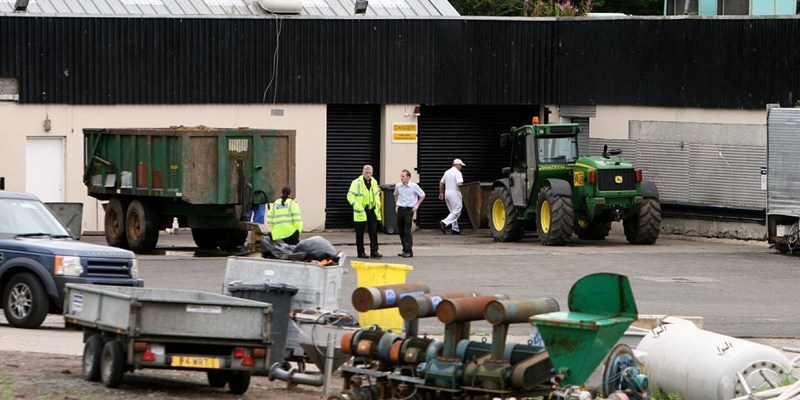An assessment of the public health effects of emissions from the Sacone Environmental Ltd plant in Brechin has suggested that there is no indication of a high likelihood of health effects beyond “annoyance”.
Brechin Community Council vice-chairman David Adam said he was not entirely happy with the report.
“It is based on what happened at the plant after improvements and is a bit out of date,” he said.
“If it had been done four or five years ago when we were concerned about the medical aspects of pollution and the psychological effect of living next to it then I think it would have found something different.
“There are still reports of smells from the abattoir and we remain concerned about what will happen to the incinerator.”
The abattoir and incinerator, part of a meat rendering plant operated by A. P. Jess Environmental Ltd, sit adjacent. The incinerator used for burning animal carcasses has been mothballed and is being run on a care and maintenance basis until the firm decides its future. The abattoir continues to operate.
The assessment report was commissioned by the Scottish Environment Protection Agency (SEPA) from AEA Environment and Energy, who review the scientific evidence of health effects from exposure to odour emissions around SEPA regulated sites.
The HONK action group was set up in 2007 in response to concerns around the odour emissions and risk of prion emissions from animal carcasses from the Sacone plant.
These were heightened following an incident in July 2007 when an employee and others at the plant were affected by suspected hydrogen sulphide fumes.
HONK has been working with SEPA and Sacone in a community liaison group forum to seek reduction of these odours and this continues.
Report author Dr Simon Hilton specialist registrar in public health medicine on behalf of NHS Tayside concluded that with respect to environmental exposure to odorous and associated substances the levels of environmental exposure were very much lower than the exposures associated with toxic effects in the workplace or in experimental studies.
At the time of the assessment the stack emissions emanating from the Sacone plant were within regulatory limits and were an improbable source of malodour.CommunitiesA number of odorous compounds known to be associated with animal rendering processes were not detected outside the Sacone plant and there was little evidence odorous environmental emissions had a direct irritant effect on individuals in the surrounding communities.
As the levels of most substances at which an odour is detectable are much lower than the amount which is needed to cause toxic/irritant effects, the identification of malodour in the area around the Sacone plant did not immediately suggest physiological effects were likely to occur.
These assertions suggest that the main health impacts of the odorous emissions are due to the odour itself.
Adverse health effects as a result of environmental odours had been widely documented and these were consistent with those symptoms reported by the population around the Sacone plant.
The relationship between odour and health was only partially understood. Given the lack of evidence in relation to this and the other issues, the precautionary principle that action should be taken to protect the public where there is a lack of scientific evidence of harm but a plausible risk was relevant.
During 2007 and 2008 over 200 complaints per annum were received by SEPA in the Brechin area relating to malodour often alleged to be associated with the Sacone plant. In many cases these odours were confirmed by SEPA staff. A small number also reported nausea associated with the smell.
Angus Council has undertaken monitoring of nitrogen dioxide via a network of diffusion tubes at various sites, including a site close to the Sacone plant and another in the town centre, over the years in Brechin and produced monthly results.
SEPA has been advised that the levels in Brechin have been within acceptable limits as stipulated by national air quality standards.
